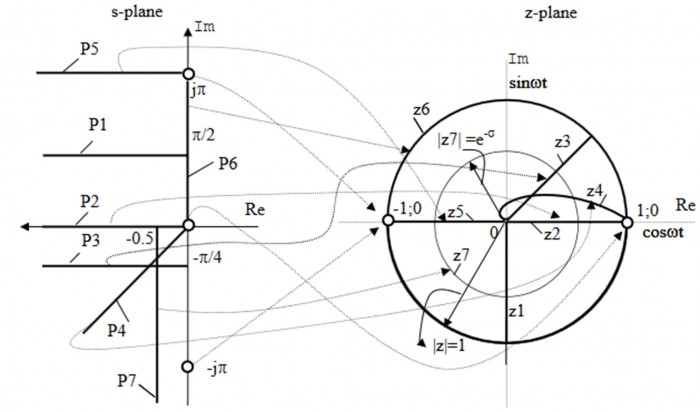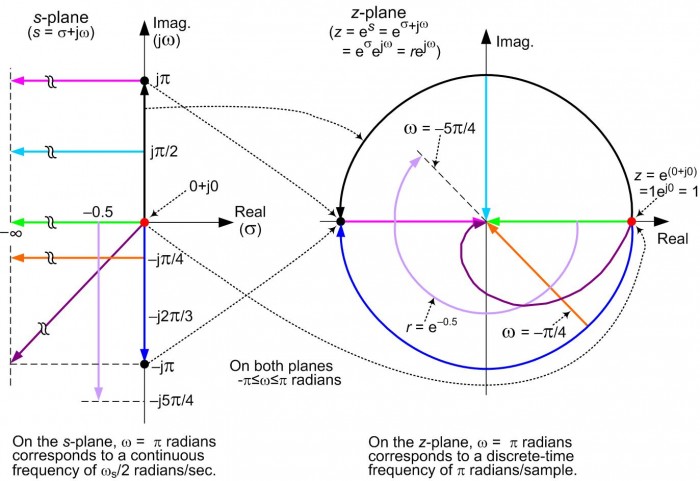An s-Plane to z-Plane Mapping Example
While surfing around the Internet recently I encountered the 's-plane to z-plane mapping' diagram shown in Figure 1. At first I thought the diagram was neat because it's a good example of the old English idiom: "A picture is worth a thousand words." However, as I continued to look at Figure 1 I began to detect what I believe are errors in the diagram.
Reader, please take a few moments to see if you detect any errors in Figure 1.

Figure 1: One (incorrect) Internet 's-plane to z-plane
mapping' diagram.
I have drawn what I think is a corrected version of Figure 1. Given the various loci of points in Figure 1's s-plane, my version of a correct 's-plane to z-plane mapping' diagram shown in Figure 2.

Figure 2: Corrected 's-plane to z-plane mapping' diagram.
Hopefully my Figure 2 is worth 1001 words. If there are any errors in that figure I hope a perceptive reader lets me know.

- Comments
- Write a Comment Select to add a comment


Your phrase " The angle of departure from z = 1" makes no sense to me because the constant damping factor locus of points (circular light purple curve) on the z-plane does NOT intersect the z = 1 point.


--Randy


Hi. Thanks to useful picture. But the bilinear transform is conformal transform, so angle between dark-purple and blue / dark-purple and green must be 45 degrees, as in source picture.

I'm sorry itxs. I don't understand what "angle between dark-purple and blue / dark-purple and green must be 45 degrees, as in source picture" means.
Hi, I am not itxs, but let me clarify a bit:
This means that bilinear transform is a conformal map, so angles between lines should be preserved. Angle formed by the intersecting dark-purple and blue lines in the red point on the right should be equal to 45 degrees, as on the left picture.
One more thing concerns me a bit. Bilinear transform should map lines into lines or circles and circles - into circles or lines. Dark purple line does not meet this requirement.
Hope this helps.
Great diagram. I teach a course in digital control and students tend to struggle with s to z-plane mapping. Picture definitely worth 100 words. Especially like the units of the jw in terms of pi which seems more understandable that units of ws. Thanks for sharing
To post reply to a comment, click on the 'reply' button attached to each comment. To post a new comment (not a reply to a comment) check out the 'Write a Comment' tab at the top of the comments.
Please login (on the right) if you already have an account on this platform.
Otherwise, please use this form to register (free) an join one of the largest online community for Electrical/Embedded/DSP/FPGA/ML engineers:





















